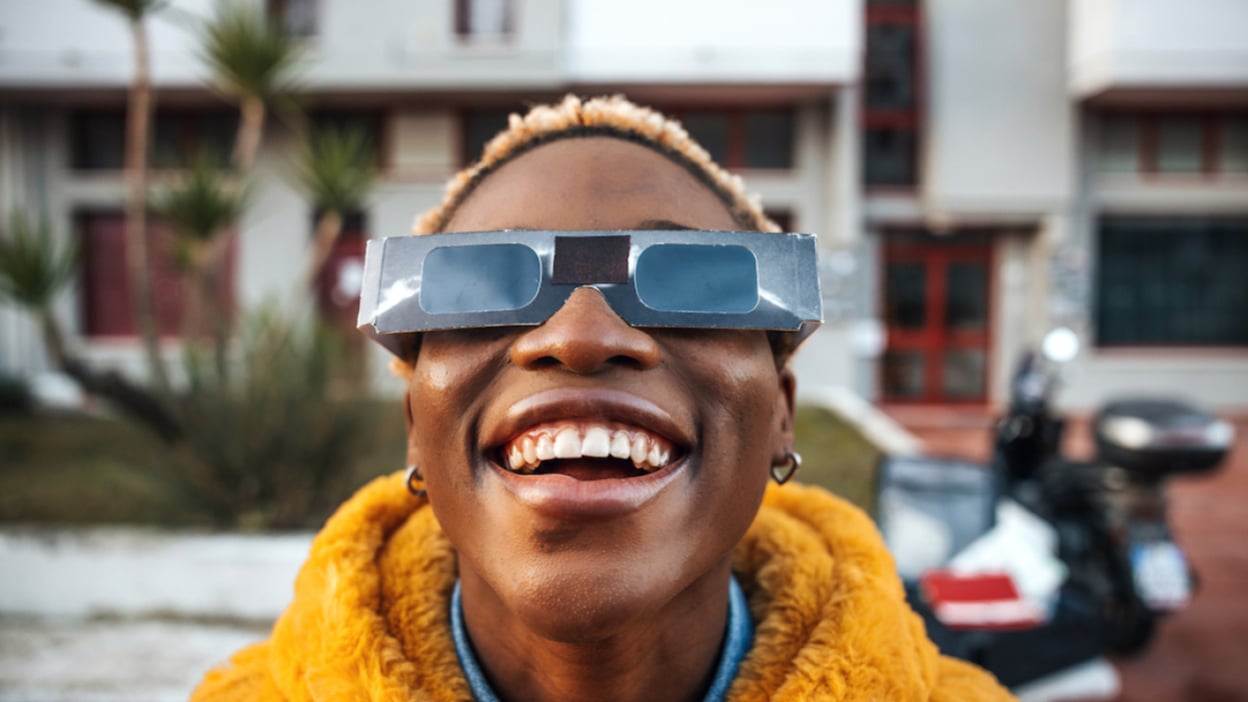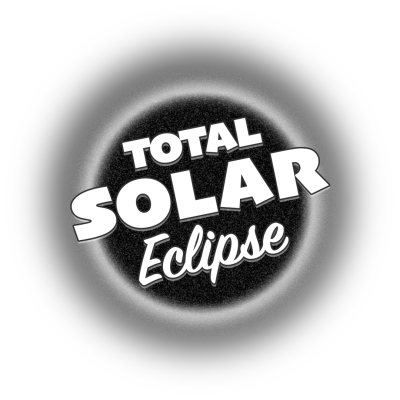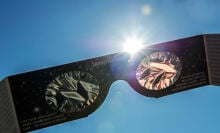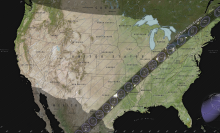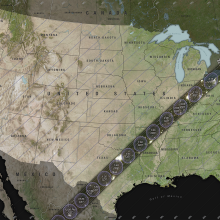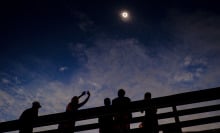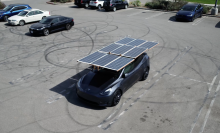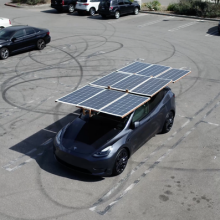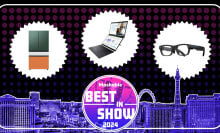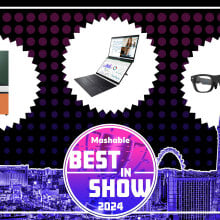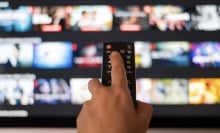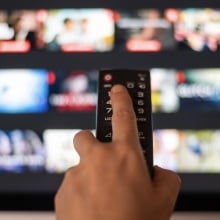Solar eclipse experts recommend picking up your eclipse glasses now — before it's too late.
These relatively cheap, specialized viewers — which allow you to safely view the sun — are essential for watching the much-anticipated celestial event on April 8, 2024 as the moon gradually blocks our star. Only during some three to four minutes of totality, when the moon has completely blocked the sun, can you watch the total solar eclipse event without these glasses.
But, crucially, you'll want to confirm that you're buying approved eclipse glasses from honest sellers. Fortunately, the American Astronomical Society (AAS), has vigilantly vetted products and sellers, so you can make an informed purchasing decision.
"Get them now — they will become scarce," Richard Fienberg, an astronomer and senior advisor at the American Astronomical Society, told Mashable.
"But don't just randomly order them online," Fienberg emphasized. "Check the AAS list."
During the last total solar eclipse to pass over the U.S. in 2017, online marketplaces like Amazon were inundated with eclipse glasses. It wasn't clear how some products had been tested. And it was hard to know where some glasses were made.
"Nobody knew if their stuff was safe or not," Fienberg recalled.
"Get them now — they will become scarce."
It's imperative that any solar eclipse glasses meet an international safety standard for viewing the sun, called "ISO 12312-2." Yet just because someone prints that it's compliant doesn't mean that it actually is.
"We used to say that you should look for evidence that they comply with the ISO 12312-2 international safety standard for filters for direct viewing of the Sun," the AAS explained online. "But in the weeks before the August 21, 2017, 'Great American' total solar eclipse, the marketplace was flooded by counterfeit eclipse glasses that were labeled as ISO-compliant when in fact they had not been properly tested and shown to be safe."
The good news is that many sellers and products are trustworthy. The AAS has compiled a Suppliers of Safe Solar Filters & Viewers reference to ensure you're buying legitimate eclipse glasses.
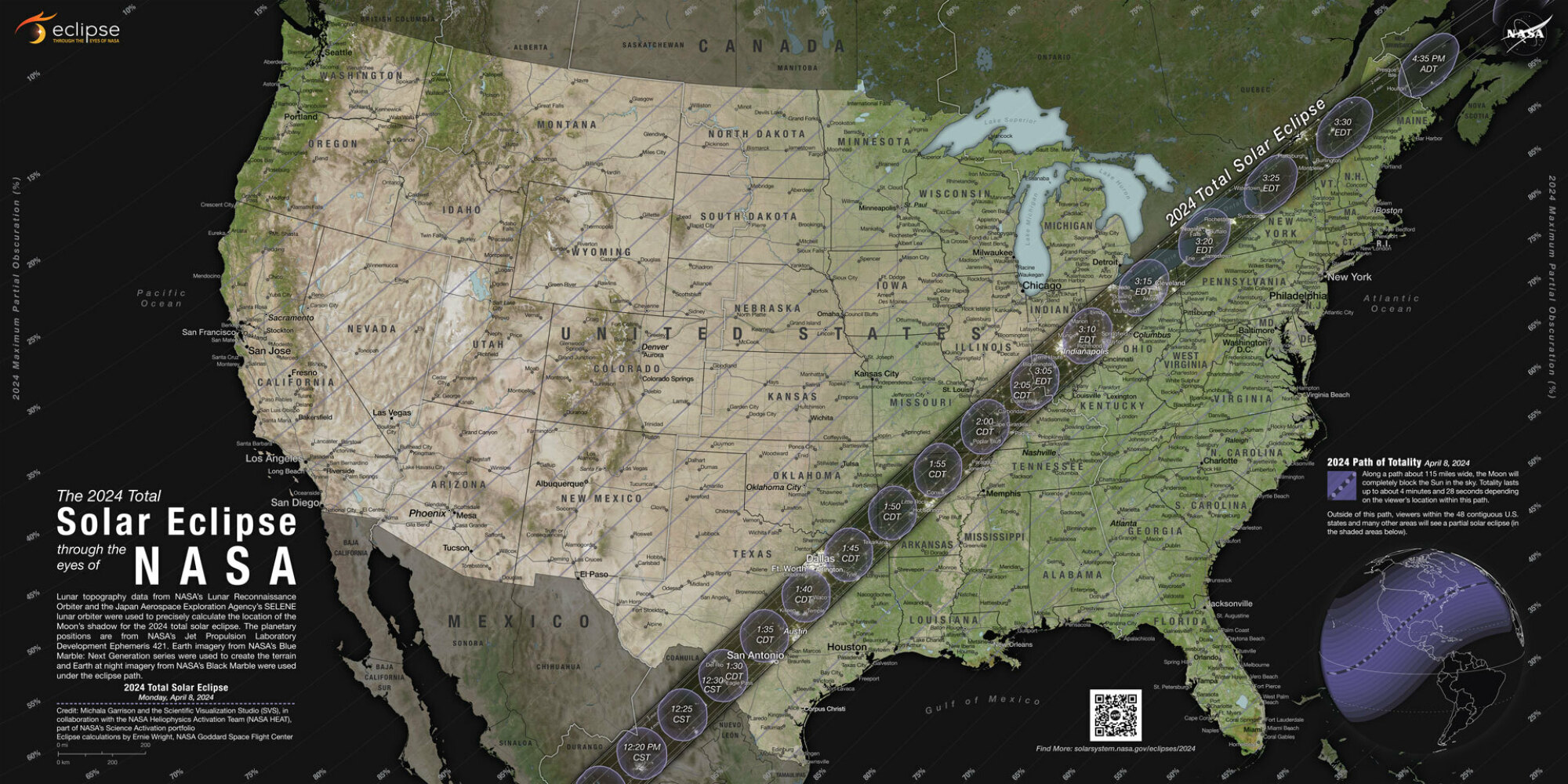
Where to buy eclipse glasses
The AAS's list of vetted sellers is a reference that provides two important levels of scrutiny: ensuring the products meet the ISO safety standard (the test results are confirmed) and that the sellers aren't being deceitful. For example, an online seller might claim a product is made in the U.S. when it's not. Or, a seller might claim their product is "NASA Approved" — but NASA doesn't promote or approve commercial products.
"We're not going to link to anybody who is making false claims," Fienberg emphasized. "Not only are we convinced the products are safe, we feel comfortable linking to these companies because they're following good business practices."
Fienberg, who so far has witnessed 14 stunning total solar eclipses (soon-to-be 15), does a lot of this vetting himself. He ensures that a seller is indeed selling products they received from an approved manufacturer. "I don't take any one company's word for it," he explained. "I also contact the manufacturer."
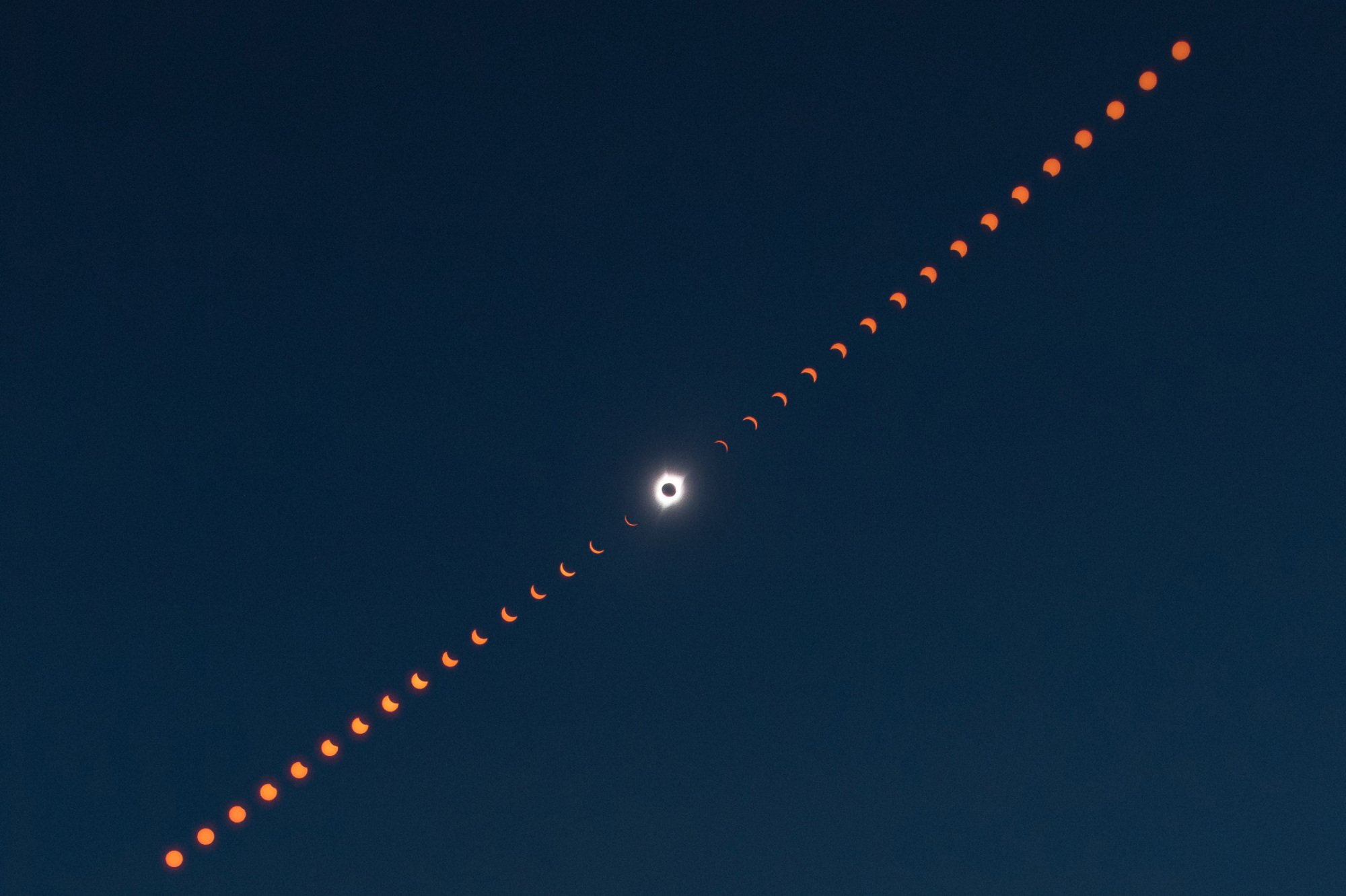
The AAS list largely recommends North American companies. That's because the 2024 total solar eclipse is crossing a wide swath of North America (Mexico, the U.S. and Canada), and the astronomy group doesn't want the list to grow too long and overwhelming. Providing — and also vetting — 100 choices is not going to provide much benefit to someone who simply wants to see who some legitimate sellers are.
For example, this past week, I used the AAS eclipse glasses supplier list to vet a seller on Amazon. I located the name in 10 seconds, double-checked my purchase, and came away with 10 vetted eclipse glasses to share with my space-intrigued family and friends.

What to do if you can't find eclipse glasses
As April 8 approaches, demand for eclipse glasses will spike as supply dwindles. Some 31 million people alone live in the path of totality (shown in the map above), and many more will travel to see the event. It's passing through some major U.S. cities.
"The suppliers are going to run out," Fienberg said. "The supply isn't infinite."
"The supply isn't infinite."
So it's wise to pick up some eclipse glasses while you can. But if you're too late, the good news is that you can share. After all, the glasses are for seeing the partial portion of the eclipse, when the moon is either gradually moving in front of the sun or away from the sun. Each period takes over an hour. The glasses can be used to look up every few minutes and watch the celestial progress from our perch on Earth.
"Not every single person has to have eclipse glasses," Fienberg said.
But you certainly don't want to be in a group that doesn't have any.
If you're interested in the latest eclipse glasses deals from vetted sellers, Mashable has compiled a list of these products here.
Healthoholic Solar Eclipse Glasses (2 Pack) — $14.99 on Amazon
SEIC Solar Eclipse Glasses (3 Pack) — $26.99 on Amazon
Helioclipse Solar Eclipse Glasses (12 Pack)— $24.95 on Amazon
Soluna Solar Eclipse Glasses (2 Pack) — $17.99 on Amazon
Lunt Solar Systems Premium Solar Eclipse Glasses (10 Pack) — $22.25 on Amazon
American Paper Optics Solar Eclipse Glasses (4 Pack) — $13.89 on Amazon (full price)
Gravitis Solar Eclipse Glasses (2 Pack) — $9.85 on Amazon (full price)
Note: All deal pricing is subject to change.
